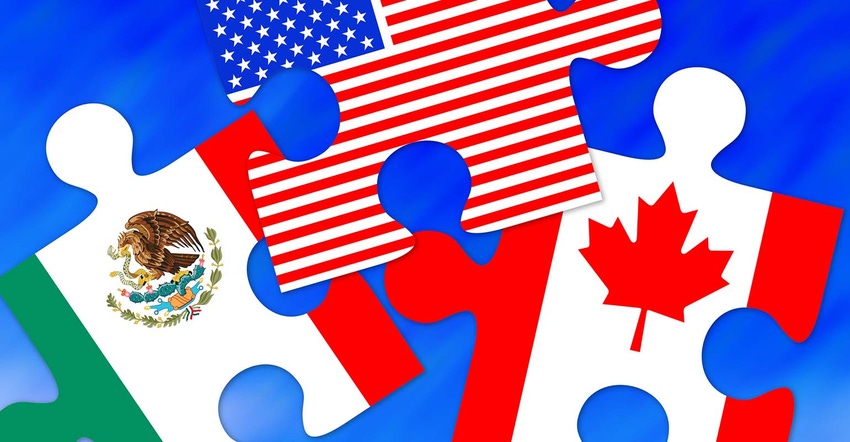
by Eric Martin
As NAFTA negotiators from the U.S. and Mexico meet for a third straight week in a push to complete a deal on cars, they’re also preparing for a showdown over a clause sought by the Trump administration that could end the agreement altogether.
The nations are nearing an accord on content and salaries for auto manufacturing, and the issue remains their top focus, according to two people familiar with the talks. But as teams become more optimistic that a cars deal can come together, attention is starting to pivot to the so-called sunset clause pushed by U.S. Trade Representative Robert Lighthizer -- another make-or-break issue.
Unlike autos, where the U.S. and Mexico have been haggling for months and largely are down to tweaking details, neither side has been willing to make concessions on the sunset clause, which would end NAFTA automatically after five years unless the nations agree to continue it, according to the people, who asked not to be named discussing private conversations. Mexico has maintained the mantra that nothing on NAFTA is resolved until everything is resolved.
‘Most Complex Issues’
The clause is considered radioactive by Mexico, Canada and business groups because it goes against a key objective of most free-trade deals. Part of NAFTA’s original purpose was to provide certainty to companies making investments in manufacturing, including car production. An accord that casts doubt on future tariff levels and corporate protections raises immediate questions about the benefits of building a factory outside the U.S.
“There are many pending issues, and we’re advancing in the grade of complexity,” Mexican Economy Minister Ildefonso Guajardo told reporters in Mexico City on Monday. “The sunset clause forms part of the most complex issues.”
Guajardo will be back in Washington on Thursday to meet with Lighthizer -- his third visit in as many weeks. The nations are pushing for an agreement by Aug. 25 in order to allow sufficient time for U.S. President Donald Trump and Mexican President Enrique Pena Nieto to sign the pact before Mexico’s next president, Andres Manuel Lopez Obrador, takes office Dec. 1. That would take the pressure off Lopez Obrador and allow him to focus on domestic priorities.
While Canada hasn’t attended meetings in the past three weeks, and Trump administration officials have been more publicly optimistic about talks with Mexico than Canada, Canada and Mexico have reiterated that they expect NAFTA to remain a three-nation agreement.
Bloomberg reported last week that the U.S. and Mexico are nearing a deal on autos. Mexican newspaper El Economista reported Monday that Mexico has accepted raising the North American content requirement for cars to the 75% level sought by the U.S. within five years. That’s up from 62.5% now, though below the 85% originally sought by the U.S. in October.
Guajardo said in an interview with Mexican station Radio Formula last week that the nation is ready to accept wage requirements near the 40% of salaries of at least $16 per hour that had been proposed by the U.S. When asked to comment, Guajardo’s press office referred to comments he made Monday, when he told reporters that Mexico has an autos proposal on the table, but declined to talk about its content.
Lighthizer’s press office declined to comment.
‘Certainty and Predictability’
On the sunset clause, Guajardo has suggested that instead of setting up NAFTA to automatically expire, the three nations should agree to evaluate the results every five years. Mexico views the clause as redundant because any of the partners already can withdraw from NAFTA after giving six months’ notice.
“A free-trade agreement is supposed to provide certainty, and this would hurt investment in Mexico and the competitiveness of North America,” Moises Kalach, the trade head for the Mexican business chamber known as CCE, said in an interview last week. “It’s not something we can work with.”
One possible deal would be for Mexico to accept the U.S. autos proposal in exchange for the U.S. dropping some of its most controversial other ideas, such as the sunset clause and restrictions on Mexican agricultural exports depending on the season, said Dan Ujczo, an Ohio-based trade lawyer at Dickinson Wright. Lighthizer rejected a similar Mexican offer in May, but the incentives now could be different given the U.S. mid-term congressional elections in November and the upcoming Mexican presidential transition, Ujczo said.
Getting a deal on autos could open the door to agreement in other areas like the sunset clause, said Arturo Sarukhan, a former Mexican ambassador to the U.S.
“Once you get one of the 800 pound gorillas off the table, then you create a narrative and a story of traction and success,” he said. “It’s not only in terms of the content per se, but the dynamics and tone of the negotiation.”
To contact the reporter on this story: Eric Martin in Mexico City at [email protected]
To contact the editors responsible for this story: Vivianne Rodrigues at [email protected] Robert Jameson, Dale Quinn
© 2018 Bloomberg L.P
About the Author(s)
You May Also Like




